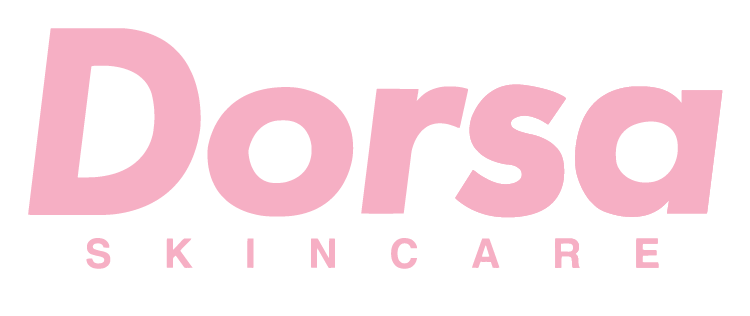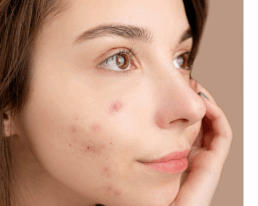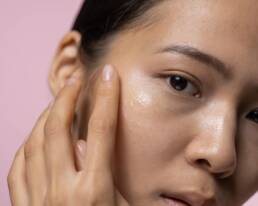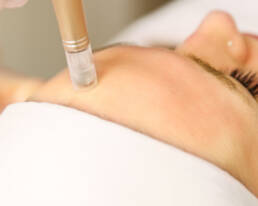At Dorsa Skincare, we believe in treating skin from the inside out—with the right products, thoughtful routines, and a deeper understanding of what your skin really needs. One of the most common concerns we help clients address is acne—and not just the hormonal kind. Even those who follow a consistent skincare regimen can find themselves facing frustrating breakouts. The truth is, acne is rarely caused by just one factor. It’s often the result of small, everyday habits that add up over time. Below, we’re breaking down five surprising (but very common) causes of acne and how to fix them.
1. Over-Exfoliation
Exfoliation can be your best friend—or your worst enemy.
While exfoliating helps slough off dead skin cells and keeps your complexion smooth, doing it too often or too aggressively can strip your skin’s natural barrier. When that happens, the skin overcompensates by producing more oil, and tiny cracks in the barrier make it easier for bacteria to enter—both of which can lead to breakouts.
Signs you’re over-exfoliating:
-
Tight, shiny skin that feels raw
-
Increased redness or irritation
-
More breakouts instead of fewer
What to do instead:
Stick to exfoliating 1–3 times per week depending on your skin type. Choose a gentle chemical exfoliant with lactic acid or PHA if you have sensitive or acne-prone skin, and always follow with a soothing moisturizer.
2. Sleeping Without Cleansing
Yes, even if you didn’t wear makeup.
Throughout the day, your skin collects pollution, sweat, oil, and bacteria—even if you’ve been indoors. When you skip your evening cleanse, all that buildup sits on your face overnight, clogging pores and increasing inflammation. For acne-prone skin, this creates the perfect environment for pimples to form.
Even one night of skipping your cleanse can trigger a breakout, especially if you’re already dealing with congestion.
What to do instead:
Make it a habit to wash your face every night, no matter how tired you are. Use a gentle, non-stripping cleanser that removes dirt and oil without damaging your moisture barrier.
Pro tip: Keep micellar water and cotton pads at your bedside for emergencies when you can’t make it to the sink.
3. Using the Wrong Skincare Products
More skincare doesn’t always mean better skin.
Using products that don’t align with your skin type or concerns can lead to congestion, irritation, and—you guessed it—acne. For example, heavy creams on oily skin, or harsh drying treatments on sensitive skin, can disrupt the balance and trigger flare-ups.
Common mistakes:
-
Using too many active ingredients at once (like retinol + acids + benzoyl peroxide)
-
Choosing products labeled “hydrating” that are actually comedogenic
-
Using acne treatments on dry skin that needs barrier repair
What to do instead:
Keep it simple. Build your skincare routine around your specific skin needs. Focus on balancing oil production, keeping pores clean, and reinforcing your skin barrier.
4. Diet & Lifestyle Factors
What you put on your skin matters—but so does what you put in your body.
While diet alone doesn’t directly “cause” acne, certain foods and lifestyle choices can influence your skin’s oil production, inflammation, and hormonal balance.
Potential acne triggers:
-
High-glycemic foods (white bread, sugary snacks)
-
Dairy, especially skim milk
-
Excess caffeine or alcohol
-
Poor sleep or high stress levels
-
Not drinking enough water
When your body is inflamed or your hormones are out of balance, your sebaceous glands may produce more oil, and that excess oil is more likely to clog pores and trigger breakouts.
What to do instead:
-
Eat a balanced diet rich in antioxidants, healthy fats, and whole foods
-
Get consistent, quality sleep
-
Manage stress through movement, mindfulness, or therapy
-
Hydrate consistently throughout the day
5. Using Comedogenic Products
Just because it’s natural doesn’t mean it’s good for acne-prone skin.
Many popular skincare and cosmetic products contain comedogenic (pore-clogging) ingredients like coconut oil, lanolin, or certain silicones. These ingredients can feel rich and nourishing—but in acne-prone skin, they can lead to blackheads, whiteheads, and cystic breakouts.
Even “clean” or “natural” products can cause problems if they’re not designed with non-comedogenic formulations in mind.
What to do instead:
-
Always check the ingredients list
-
Look for products labeled non-comedogenic
-
Avoid heavy oils and occlusives if your skin is prone to breakouts
Acne is complex—and frustrating—but it’s also manageable when you understand the hidden causes. If you’re exfoliating too often, skipping your cleanse, or using the wrong products, your skin might be reacting by breaking out. The good news? With small, intentional changes, you can begin to restore balance and see improvements.
At Dorsa Skincare, we’re here to help you navigate your skincare journey, whether you need help building a new routine or identifying what’s causing your breakouts, we’re just a message away.

Ready for an expert opinion? Set up a consultation.
Experience expert skincare treatments in Denver, CO with Dorsa Skincare — where beauty, confidence, and expert care come together. Contact us today for personalized solutions perfectly tailored to your unique skincare needs.
Like this article? Spread the word!
Related Posts
May 8, 2025
Post-Workout Skincare Routine
Sweaty workouts are great for your body—but not always for your skin. Learn how to care…
May 7, 2025
Dry vs. Dehydrated Skin
Dry skin and dehydrated skin may look alike, but they’re not the same—and treating them…
August 16, 2023
How Does Medical Microneedling Work?
Discover how medical microneedling works and rejuvenates skin. Explore the science behind…





